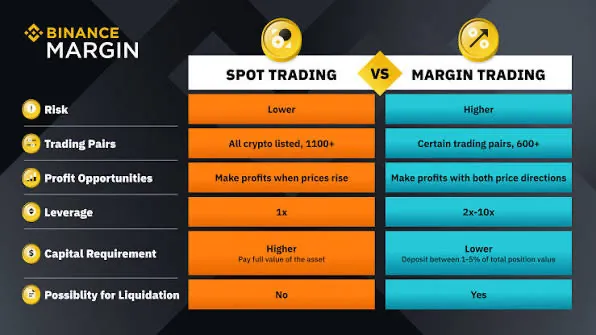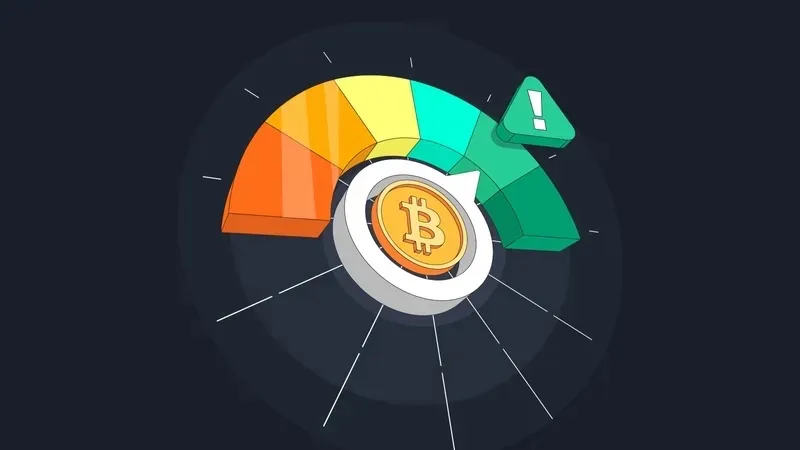Trading vs Holding: Which Strategy Actually Wins in Crypto?
Are you wondering whether trading or holding is the better strategy in the crypto market? This article explores trading vs holding, which strategy actually wins in crypto, to uncover which approach wins in the long run. You’ll learn about the returns, risks, and time commitments involved with each strategy to determine the best fit for your financial goals in the evolving world of cryptocurrency.

Key Takeaways
- Crypto trading involves short-term transactions that can yield high returns but also come with significant risks and emotional challenges.
- HODLing, or long-term holding, is a strategy that potentially offers greater returns over time with lower stress and fewer transaction fees.
- A combined approach of trading and holding can optimize returns while managing risks, balancing short-term gains with long-term asset growth.
Understanding Crypto Trading and Holding
Understanding what trading and holding in the crypto market entail is essential before considering potential returns and risks. These two strategies cater to different investor profiles and financial goals.
Crypto trading entails buying and selling cryptocurrencies to capitalize on short-term price movements. This strategy demands keen market observation and often involves cryptocurrency trading, crypto investing, and crypto day trading, which can be lucrative but also carries significant risks and demands.
On the other hand, holding, often referred to as HODLing in the crypto community, is a long-term investment strategy. Investors buy and retain digital assets, such as cryptocurrencies and tokens, anticipating their value to grow over time despite market volatility.
Choosing between these strategies depends on factors such as risk tolerance, time availability, and financial goals. Grasping these fundamentals helps align your strategy with personal objectives and manage investments more effectively.
What is Crypto Trading?
Crypto trading is all about capitalizing on short-term price movements. Traders buy and sell crypto assets frequently, sometimes within the same day (day trading); a day trader is someone who actively buys and sells assets within a single day to profit from rapid price changes. Day trading crypto involves executing multiple quick transactions, often based on technical analysis and trading signals, to maximize profits. Technical analysis helps traders identify optimal entry points for their trades by using tools like moving averages and Bollinger Bands to recognize trends and signals for entry. Other strategies like swing trading focus on holding assets for a few days to capture medium-term price movements.
The high volatility of the cryptocurrency market creates numerous trading opportunities, making it conducive to short term volatility trading. Successful traders must stay updated with market news, develop robust trading strategies, and use various trading tools to make quick, informed decisions, with fast decision making being especially important in volatile markets.
This active engagement can be rewarding but requires a significant time commitment and a thorough understanding of market dynamics.
What is Holding in Crypto?
Holding, or HODLing, is a long-term strategy where investors buy crypto assets and hold onto them, often for years, in anticipation of future growth. This approach is less about frequent trades and more about the belief in the asset’s long-term potential. Holders benefit from long-term growth and compounding returns due to fewer transactions and lower fees.
This strategy is particularly suitable for beginners or those with a lower risk appetite, as it requires less active involvement and can be less stressful.
Market Analysis
Market analysis is the backbone of both day trading and long-term investing in the crypto market. Whether you’re aiming for quick profits through short term price movements or seeking exponential growth with a buy and hold strategy, understanding how to analyze market trends and price movements is essential for success.
For day traders, market analysis is a daily necessity. By closely monitoring market volatility and using technical analysis, day traders can spot trading opportunities and execute trades within the same day. Technical indicators like the Relative Strength Index (RSI) and Moving Average Convergence Divergence (MACD) are invaluable trading tools for identifying potential entry and exit points. For example, when the MACD line crosses the signal line, it can generate trading signals that help traders capitalize on price swings and short term volatility. Swing trading, another popular short term strategy, also relies heavily on these indicators to catch medium-term price differences.
Long term investors, on the other hand, use market analysis to assess the overall health and future potential of crypto assets. While they may not react to every daily price swing, understanding market conditions and conducting fundamental analysis helps them identify assets with strong long term growth prospects. By combining technical analysis with fundamental research, long term investors can make informed decisions about when to buy and hold, and when to adjust their portfolios in response to major market trends or bear markets.
Retail traders often face unique challenges in the crypto market, such as high transaction costs from frequent buying and selling, and the emotional stress of reacting to rapid price fluctuations. Conducting your own research and using reliable trading tools can help mitigate these risks. By developing a trading style that matches your risk tolerance—whether that means embracing high risk, short term strategies like day trading, or sticking to long term investing and buy and hold strategies—you can better navigate the complexities of the crypto market.
The Potential Returns
When evaluating crypto investments, understanding the potential returns from trading versus holding is essential. Each strategy has its own benefits and risks, and the choice between them can significantly impact your financial outcomes.
HODLing is often recommended as the most effective strategy for achieving the most money in cryptocurrency investments. Holding core assets for long-term growth while trading a smaller portion for short-term profits allows investors to maximize their returns. Both strategies aim to help investors make more money over time, whether through steady appreciation or by capitalizing on market movements.
However, holding strategies provide a consistent path to significant returns, whereas trading is riskier with a higher chance of losses. Achieving consistent profits through trading requires disciplined strategies and strong risk management to navigate market volatility and avoid large losses.
Historical Performance of Holding
Long-term investors often highlight the benefits of holding assets like Bitcoin, which has historically delivered higher returns than other markets. For instance, during bull market phases, cryptocurrencies have provided substantial returns. Typically, holding can yield massive profits, with potential returns reaching up to around 1100% over a few years.
The buy-and-hold strategy typically yields better returns for both beginners and experienced investors. For example, buying and holding Bitcoin can potentially lead to a 4x growth over a decade. Thus, long-term investing in established cryptocurrencies can be lucrative, offering substantial growth over time.
Potential Gains from Active Trading
Active trading presents significant profit potential by capitalizing on short-term price movements. For example, retail traders and day traders can benefit from daily price swings and market dips to generate quick profits, with returns ranging widely from 10% to 200% in favorable conditions.
However, the high volatility and rapid price fluctuations in the crypto market require traders to be well-prepared and experienced to succeed. Although the potential for quick gains is enticing, approximately 90% of active traders lose money over the long term due to the high risks and challenges.
The Risks Involved
Every investment strategy carries its own set of risks, and understanding these is crucial for informed decision-making. Awareness of potential downsides helps manage investments more effectively, whether you choose to trade or hold your own research.
Assessing your risk tolerance is key to deciding whether to engage in active trading or long-term holding. Emotional decision-making during trading can result in significant financial mistakes, with roughly 90% of active traders losing money over the long term due to high risk, volatility, and lack of strategy.
Aligning your trading or holding choices with personal financial aspirations and risk tolerance is essential to avoid significant losses.
Risks of Crypto Trading
Crypto trading carries high risks, primarily due to market volatility that can lead to rapid gains or losses. Using leverage amplifies both potential profits and losses, increasing risk exposure. Traders face significant emotional pressure from frequent market fluctuations, which can lead to impulsive decisions. Maintaining discipline is crucial as many traders struggle with emotional trading and other mental pitfalls.
Additionally, day trading incurs high fees due to the frequency of transactions, significantly eroding profits. Successful traders use risk management strategies like stop-loss orders to mitigate potential losses. Overall, active trading combines risks such as market volatility, emotional stress, and high transaction costs.
Risks of Holding Crypto
Long-term holding of cryptocurrencies exposes investors to risks such as market crashes, security concerns, prolonged bear markets, and downturns. For example, during bear markets, holders may be tempted to sell at a loss, leading to panic selling and increased emotional stress.
Furthermore, long-term holding carries the risk of cyber theft and hacks, leading to substantial financial loss. Losing access to private keys can result in the loss of protective measures for assets, rendering them inaccessible.
Although long-term holding is less stressful, it can still present emotional challenges, especially during downturns.
Time Commitment and Lifestyle
Your investment strategy should align with your lifestyle and available time. The time commitment and stress levels associated with trading and holding vary significantly, and choosing the right approach can greatly impact your quality of dear life.
Investors should consider their available time and lifestyle preferences when choosing between day trading and holding. Key factors influencing this choice include risk tolerance, time commitment, and financial goals. Most investors allocate a larger portion of their portfolio to long-term holdings and a smaller portion to active trading, reflecting differing time commitments.
Trading is generally more stressful than holding, which allows for a more relaxed lifestyle.
Time Demands of Active Trading
Active trading generally requires several hours a day for research and monitoring market trends, often leading to long hours in front of a screen. Day trading typically involves staying updated with market news and trends and analyzing multiple charts and indicators daily.
A strong understanding of technical analysis is essential for traders aiming to succeed in day trading.
Lifestyle of a Long-Term Holder
Holding cryptocurrency allows investors to engage in other activities without constant market monitoring. Long-term holders of crypto asset can benefit from potential asset appreciation with minimal ongoing engagement.
Generally, long-term holding is viewed as a less stressful investment strategy compared to active trading.
Combining Strategies for Optimal Results
For those looking to optimize returns while managing risks, combining trading and holding strategies can offer a balanced approach. This hybrid strategy leverages the benefits of both methods, providing flexibility and potential for higher returns.
Combining trading and holding strategies allows investors to leverage short-term gains while ensuring long-term asset growth. Blending these day trading strategies can help mitigate risks while aiming for higher returns.
Hybrid Approach
A hybrid investment strategy provides flexibility, enabling investors to capitalize on market movements while maintaining core long-term positions. This approach optimizes portfolios by benefiting from both active trading and long-term holding.
Combining these strategies provides the opportunity for a short term strategy alongside the potential for short term strategies and long-term growth.
Managing a Mixed Portfolio
Balancing a portfolio with both trading and holding positions helps mitigate risks associated with market volatility. Effective management requires regular review and adjustment to maintain the desired balance between trading and holding.
Expert Insights and Opinions
Insights from experienced traders and long-term investors provide valuable perspectives on successful strategies in the crypto market. Understanding their views helps you make more informed decisions.
Bitcoin has shown an impressive average returns of 79% in the fourth quarter since 2013, underscoring the potential to generate returns through long-term holding strategies.
Insights from Experienced Traders
Experienced traders often see active trading as offering a wide range of potential gains, particularly during volatile market conditions. However, they also emphasize the high risks, including market volatility and emotional stress, which can lead to substantial financial losses. The effectiveness of trading strategies varies significantly based on individual skills and market adaptability, especially for an experienced trader.
Many experienced traders advocate a hybrid approach, suggesting that combining active trading with holding balances risks and maximizes potential profits.
Opinions of Long-Term Investors
HODLing is often considered the best strategy for achieving high returns in crypto investments. Long-term investors highlight the exponential growth potential of holding assets over time. For instance, over the last 10 years, Bitcoin has outperformed the S&P 500, demonstrating its strong long-term growth potential.
Investing for the long term allows many investors to benefit from market trends and exponential growth, making it a potentially lucrative strategy.
Tools and Resources for Success
The right tools and resources can significantly influence the effectiveness of both trading and holding strategies in the crypto market. These resources help make better-informed decisions and enhance your overall investment strategy.
Essential trading tools include technical indicators like the Relative Strength Index (RSI) and Moving Average Convergence Divergence (MACD) to help traders analyze market trends. Long-term investors should use resources such as secure wallets, market analysis platforms, and educational content to strengthen their investment position.
Trading Tools and Indicators
Various technical indicators are essential for day trading cryptocurrency:
- The Relative Strength Index (RSI) measures the speed of value changes to identify overbought or oversold conditions.
- The Moving Average Convergence Divergence (MACD) indicator aids in timing entries and exits.
- Moving averages, such as the simple moving average (SMA) and the exponential moving average (EMA), track average prices to reveal trends and price movements.
Additional tools for technical analysis include:
- Bollinger bands
- Volume indicators
- Crossovers between short and long-term moving averages, which can signal a trend change
- Divergence between RSI and price trends, which may indicate potential reversals
Traders often use this phenomenon to anticipate market changes. Combining multiple indicators is recommended for a well-rounded view.
Resources for Long-Term Investors
Long-term investors in cryptocurrency benefit from using specific resources that enhance their investment strategies. Secure wallets are crucial as they protect against hacks and theft, ensuring assets are stored safely. Market analysis platforms provide valuable insights, helping investors make informed decisions regarding market trends and performance.
Investors can enhance their understanding of the crypto space by engaging with educational content such as articles, webinars, and online courses. These resources help long-term investors stay informed about market developments and improve their overall investment strategies.
Summary
Trading and holding each have their own merits and drawbacks. Active trading can offer quick profits but comes with high risks, significant time commitments, and emotional stress. On the other hand, long-term holding provides a more relaxed approach, with the potential for substantial returns over time but requires patience and resilience during market downturns.
Ultimately, the best strategy depends on your individual financial goals, risk tolerance, and lifestyle preferences. For many, a hybrid approach that combines both trading and holding strategies can provide the best of both worlds, offering flexibility and the potential for both short-term gains and long-term growth.
Frequently Asked Questions
What is the main difference between crypto trading and holding?
The main difference is that crypto trading focuses on short-term profit through frequent buying and selling, while holding (HODLing) entails purchasing assets with the intention of keeping them long-term for potential growth.
What are the potential returns of holding cryptocurrencies long-term?
Holding established cryptocurrencies like Bitcoin long-term can lead to substantial returns, often exceeding those of traditional investment strategies. Historically, this approach has proven beneficial for many investors.
What are the risks associated with active crypto trading?
Active crypto trading carries significant risks, including extreme market volatility and the potential for emotional decision-making, leading to financial losses. It’s important to be aware that approximately 90% of active traders do not achieve long-term profitability.
How much time does active trading require compared to holding?
Active trading demands substantial daily time for research and market monitoring, while holding requires far less ongoing engagement, enabling a more relaxed lifestyle.
Can combining trading and holding strategies be effective?
Combining trading and holding strategies can be effective, as it allows for flexibility and the opportunity to achieve both short-term profits and long-term growth. This hybrid approach effectively balances risks while maximizing potential returns.










